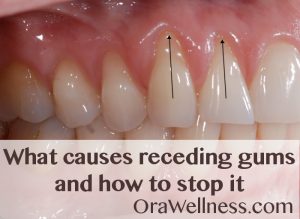Receding gums can be a source of confusion due to the wealth of information, and sometimes misinformation, available online. This article aims to dispel myths surrounding receding gums and offer practical suggestions for addressing gum recession.
Anatomy of Gum Tissue:
Our gums consist of a skin layer covering the bone tissue of the upper and lower jaws. Healthy gums rely on intact underlying jaw bone for support. Receding gums occur when the supporting bone diminishes.
Main Causes of Jaw Demineralization:
- Periodontal Disease (Advanced Gum Disease): Research indicates a high prevalence of periodontal disease, affecting 47% of 30-year-olds and over 70% of 65-year-olds. Thug bugs associated with gum disease destroy bone tissue and trigger chronic inflammation.
- Bruxism (Teeth Grinding and Clenching): Habitual grinding and clenching lead to breakdown in jaw strength and structure.
- Trauma: Physical trauma to the face or jaw can contribute to bone demineralization.
- Nutritional Deficiencies: While not covered in detail, general nutritional deficiency plays a significant role in the demineralization process.
- Genetics: Genetic factors may influence the original thickness of facial jaw bones.
The Connection Between Gum Recession and Bone Health:
Gums rely on a scaffolding-like structure of jaw bone for support. The facial side of the jaw bone is particularly crucial in preventing gum recession.
👇 To continue reading, scroll down and click Next 👇
ADVERTISEMENT

